After receiving the first IQ250 in the US, there were certain tests that were crucial to understanding the back’s capability. First was the tech camera test, secondly there was a Live View test. Both of which can be read by clicking on the active links here. However, the most significant new feature of the IQ250 that separates it from the rest are high ISO and low light performance.
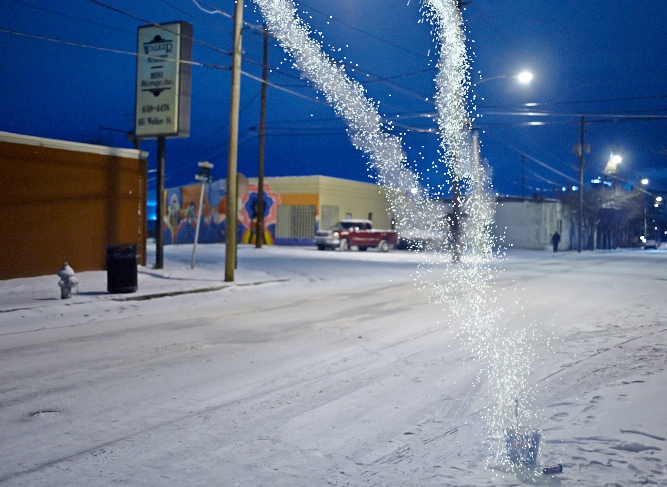
Atlantans celebrate the snow day with… fireworks? Handheld IQ250, ISO6400, 45mm 1/60s, f/2.8
Comparisons are often made between CCD and CMOS sensors. In all practicality, CCD sensors and modern day CMOS sensors are perfect complements of each other. CCD sensors are base ISO champions with incredible image quality at low sensitivity levels, but struggle with noise levels at higher ISO. Conversely, CMOS sensors perform extremely well in low light, but when compared to a typical CCD sensor, they are not quite so clean at base ISO levels. A second significant difference is refresh speed. Where CCD sensors rely on only a couple of readout points, each pixel in a CMOS sensor can be a readout point depending on the design. This translates to faster file transfer rates and true live video and yeilds 6 images captured every 5 seconds without any slow down of capture on the new IQ250.
Phase One’s answer for high ISO up until now was to use pixel binning to combine four pixels into one larger pixel for increased sensitivity called Sensor+. Lower noise levels at High ISO is achieved in this way, but of course at a loss of 75% of the original resolution. Now, with the new IQ250, you get the best of both worlds.
Our goal at Capture Integration is to get real, usable information from our tests. And we want to be honest about the actual capabilities of all of our capture devices. As the snow came down this week and Atlanta, we set out about town in hopes to brave the elements and get low light images in the field.
Why did we do this test?
Too often we find the images put online to be perfectly exposed and over lit. They show the products in the “very best light”…. no pun intended. However, the real world use of these products by our customers are very seldom in these conditions and therefore, false perceptions are made. We strive to be the source for unbiased tests online. So we decided to use “Snow-margeddon” this week to truly push the only IQ250 in the United States as far as we could. What better test than by the light of a single candle and a second light source matched to it?
Test Parameters
Location:
The basement of our local watering hole, The Elliot Street Pub.
An overhead lamp was dimmed to give us the less illumination than a single existing candle on the table top.
Note: The highlights visible on the lamp are a reflection of a red EXIT sign from 20′ across the room.
The Gear:
- Phase One IQ250
- Phase One 645 DF
- Phase One 45mm D f/2.8
- Electromagnetic Cable Release
- Pre-Release Capture One Pro 7.2 with IQ250 support
Capture One Pro 7.2 is required to develop IQ250 images, and will crash earlier versions of Capture One. Use only Capture One 7.2 – click here to get it from our
Download ArchiveDownload the RAW files
Firefox users, please right click (control + click) your link and select ‘Save Link As…”
Additional Notes:
Manual focus through the viewfinder with a wide angle lens proved difficult under these lighting conditions. To compensate, we used live view to manually focus and find the exact focal plane needed with ease. Live View worked extremely well in a very low light environment and was a perfect solution in a DIFFICULT real world scenario.
The Results
4 Minute – Long Exposure
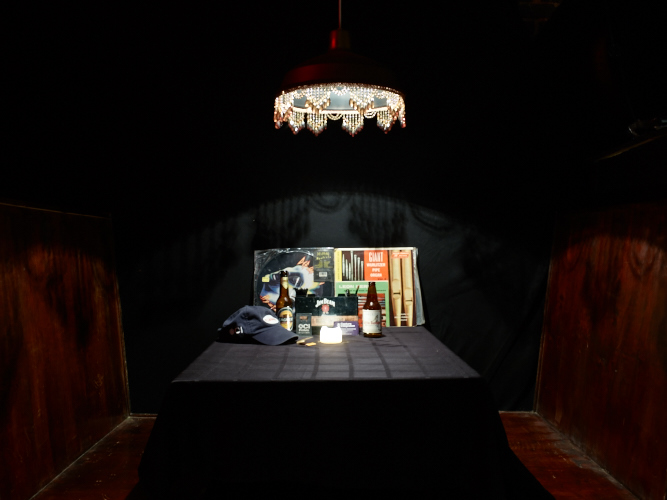
4 minute exposure – Phase One IQ250, DF, 45mm D, ISO 100, f/11
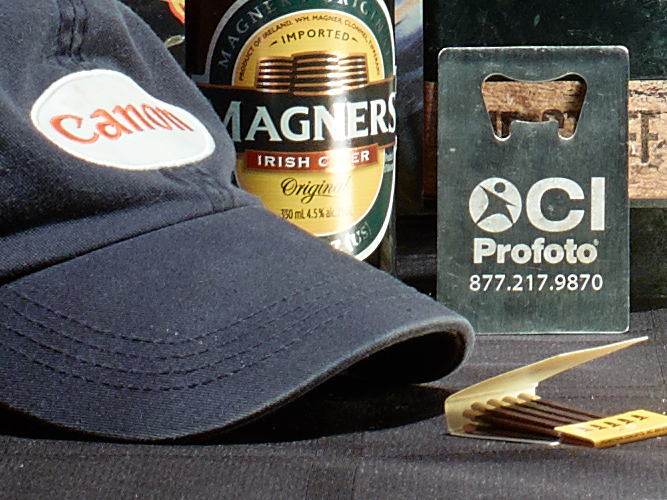
100% Crop
At four minutes, the IQ250’s noise was very low in key areas including deep shadows. Fine detail is retained and results in a clean image. We were impressed with the dynamic range of the IQ250’s CMOS sensor, especially in regard to recoverable highlight and shadow detail. The new IQ250 boasts an impressive 14 stops of dynamic range on paper, and we wanted to see it in action.
– High ISO –
In an effort to really push the IQ250’s ISO capabilities, we added two beautiful nearby models and photographed a low key scene full of shadows and dark tones – which would typically be difficult for sensors pushed to these extreme conditions. As previously stated, the overhead lamp was dimmed to give us the less illumination than the single existing candle on the table top, so the light source we were working with is extremely dim.
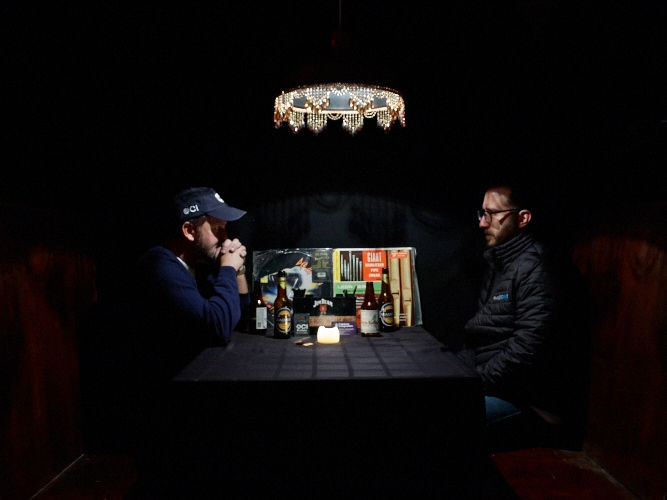
ISO 1600 – Phase One IQ250, DF, 45mm D, 2.5s, f/11
– Comparisons –
Below are a couple comparisons at 100% crops between 1600 ISO and 3200 ISO:
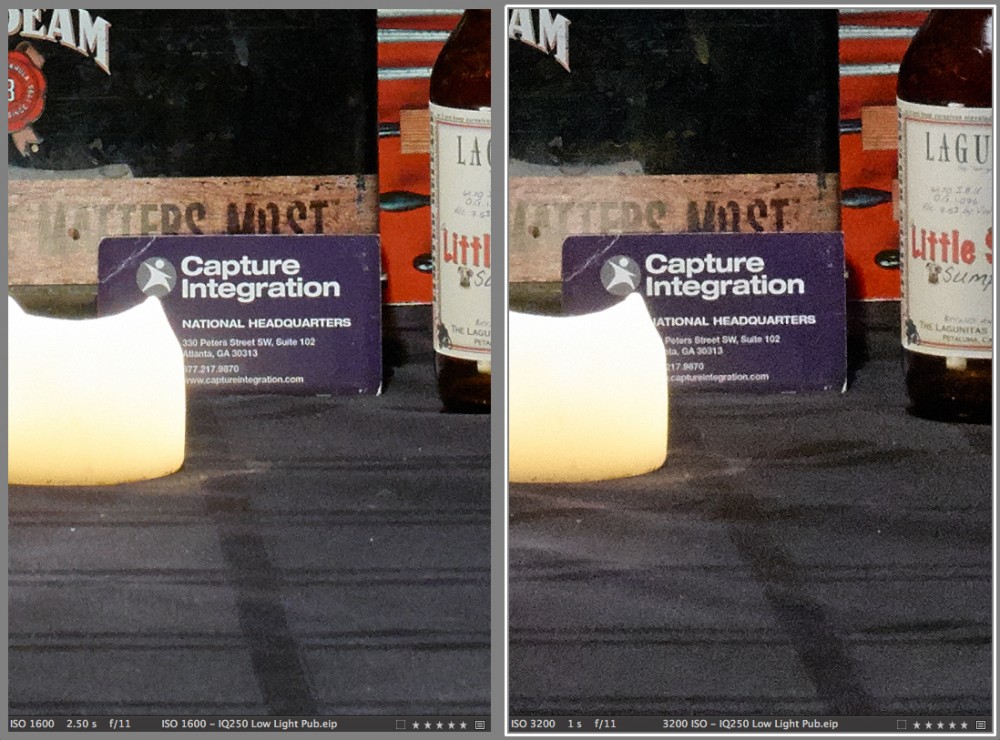
Left: ISO 1600, Right: ISO 3200
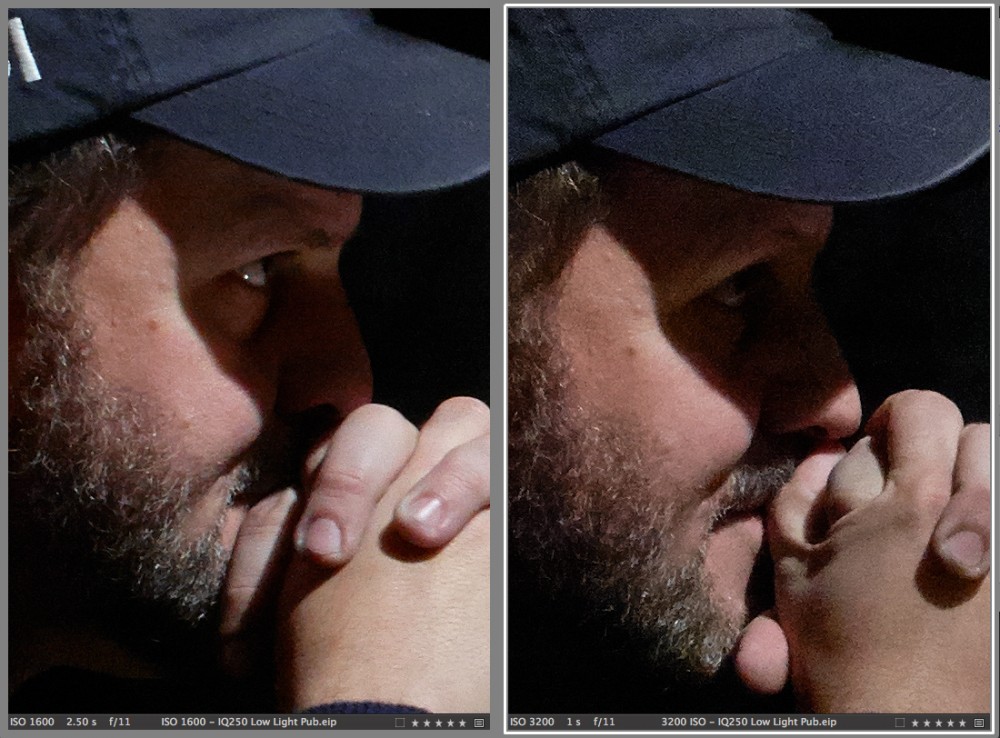
Left: ISO 1600, Right: ISO 3200
Highlight Recovery
* Update from Josh *
Since I like to fidget and experiment with images, I just decided to play with the above image a bit, particularly testing the highlight recovery since we primarily focused on shadows & noise. While taking some adjustments to the extreme is not a likely adjustment you’d make, it’s interesting just how much discernible data and texture could be recovered. Click on any image to view larger.
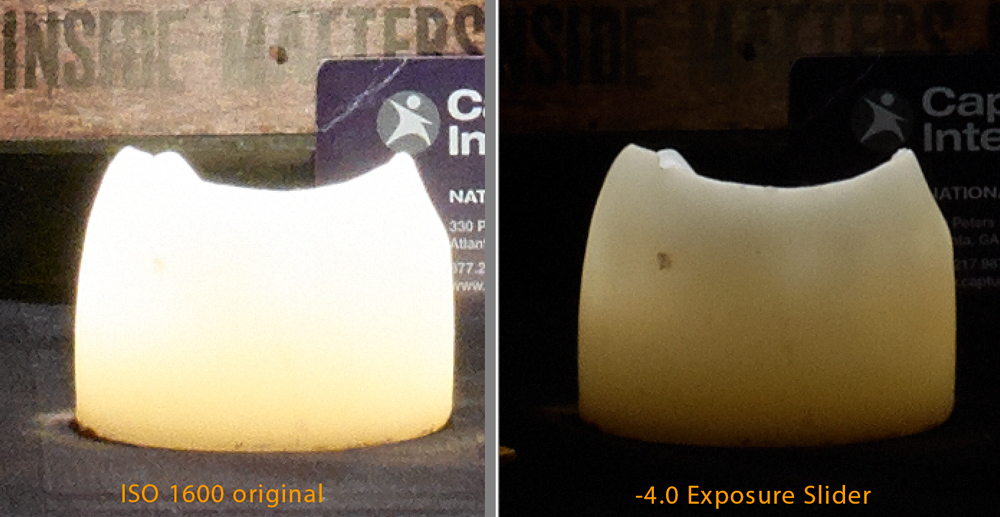
100% Crop on Candle – Left: Original, Right: -4 Exposure Slider
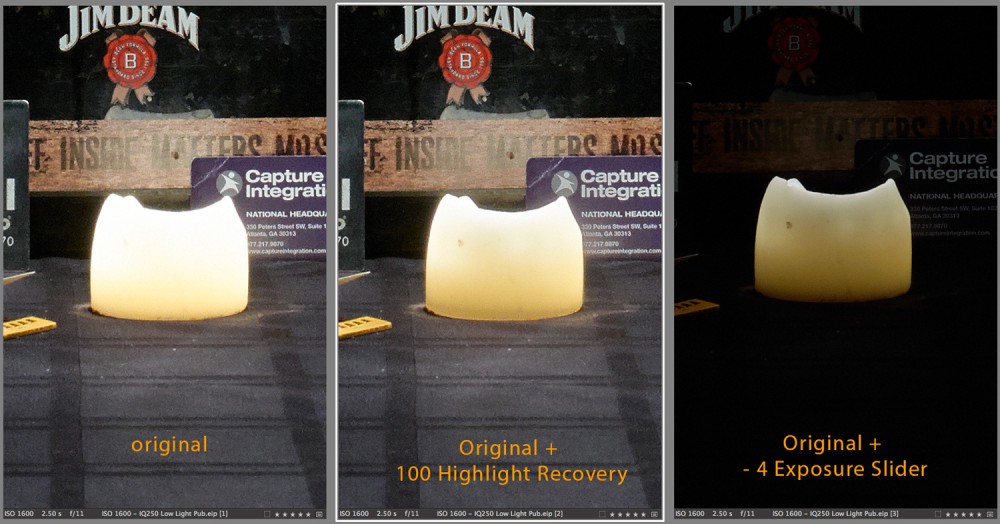
Left: Original, Middle: 100 Highlight Recovery, Right: -4 Exposure Slider
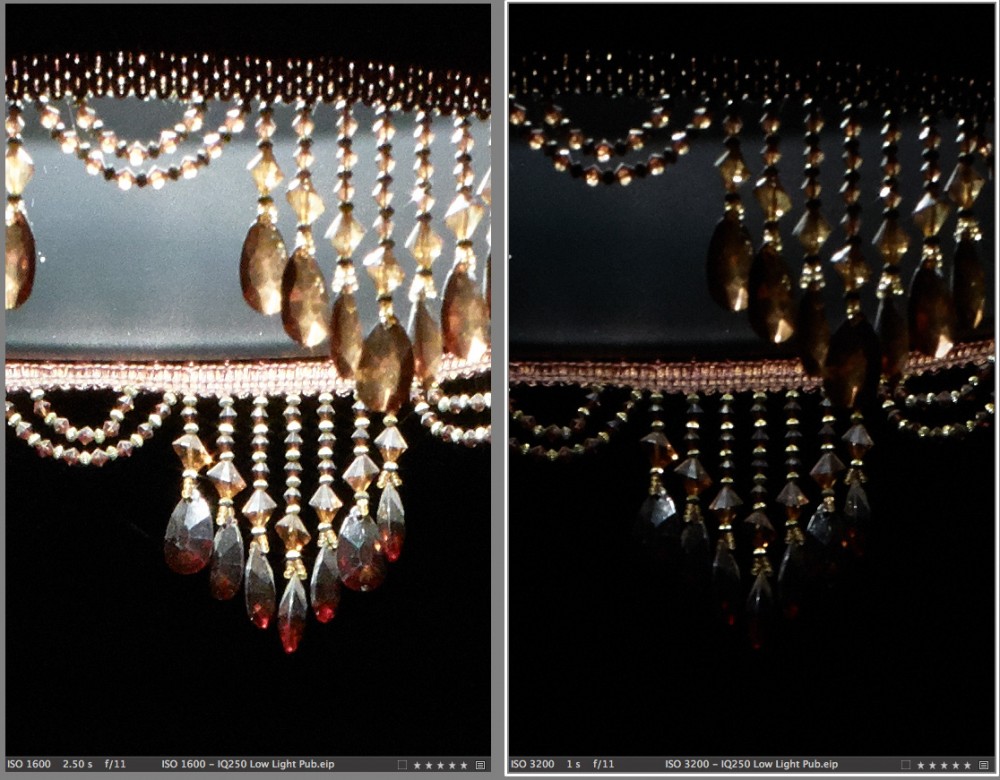
100% Crop on Lamp. Left: original, Right: -4 Exposure
Conclusion:
High ISO performance of this caliber on a 50 megapixel digital back is certainly something to celebrate. This back is the first of its kind, and sets a precedent for CMOS sensor digital backs in the future. Download the raw files and take a look for yourself first-hand at the results. For specific questions about low light performance of the new IQ250, or to schedule a demo, please give us a call!